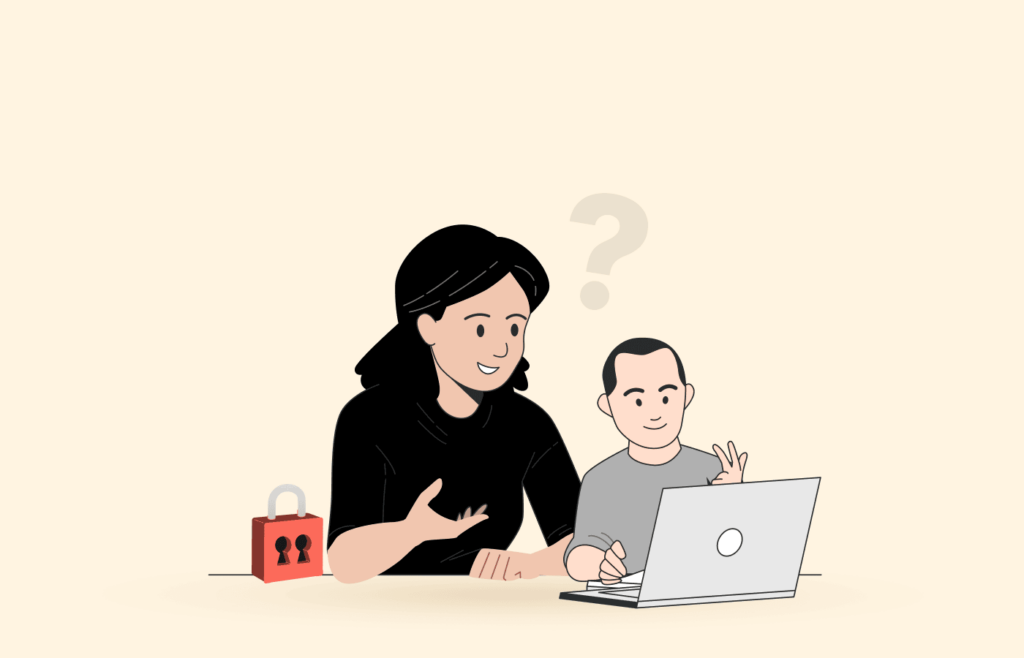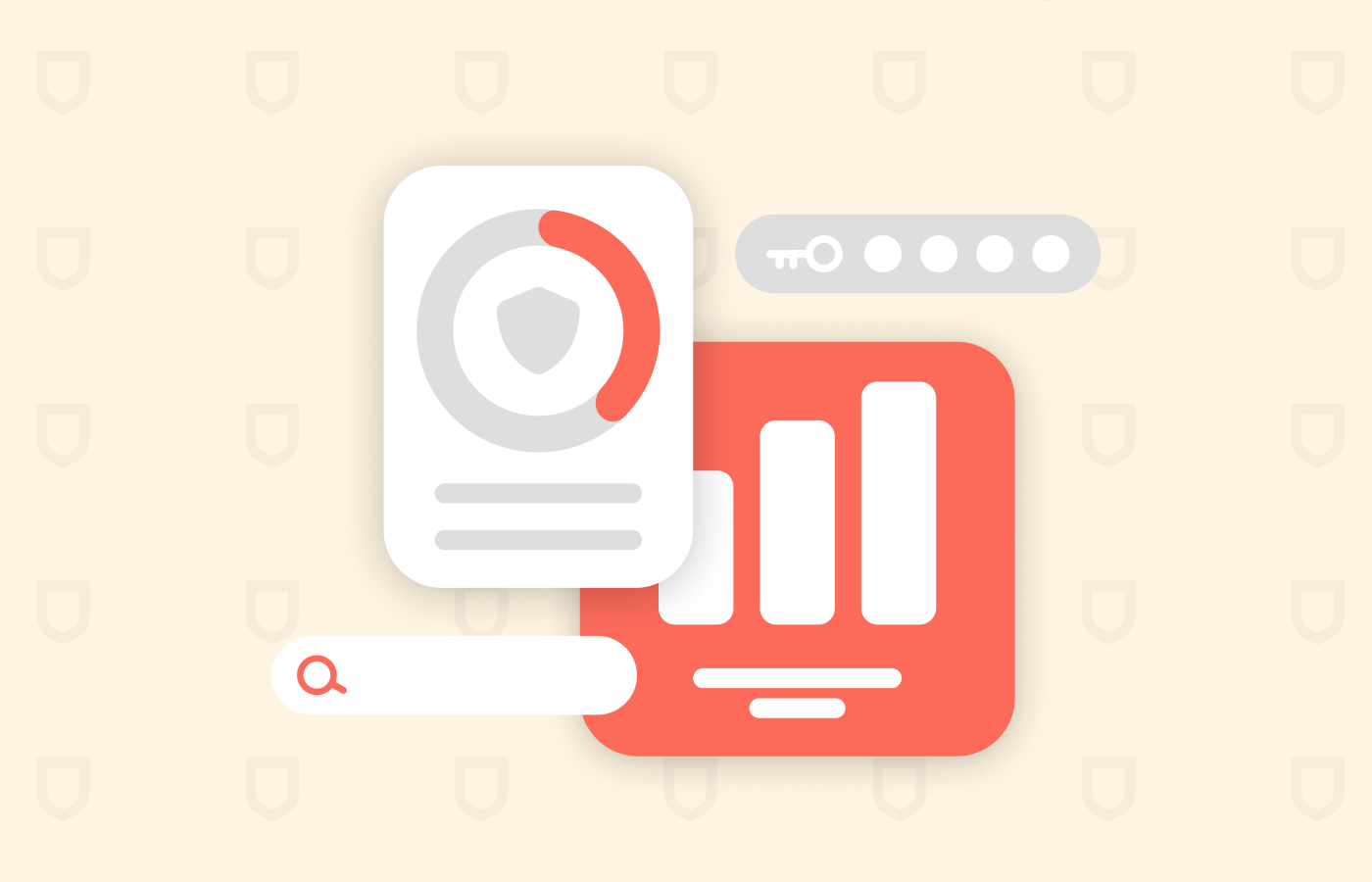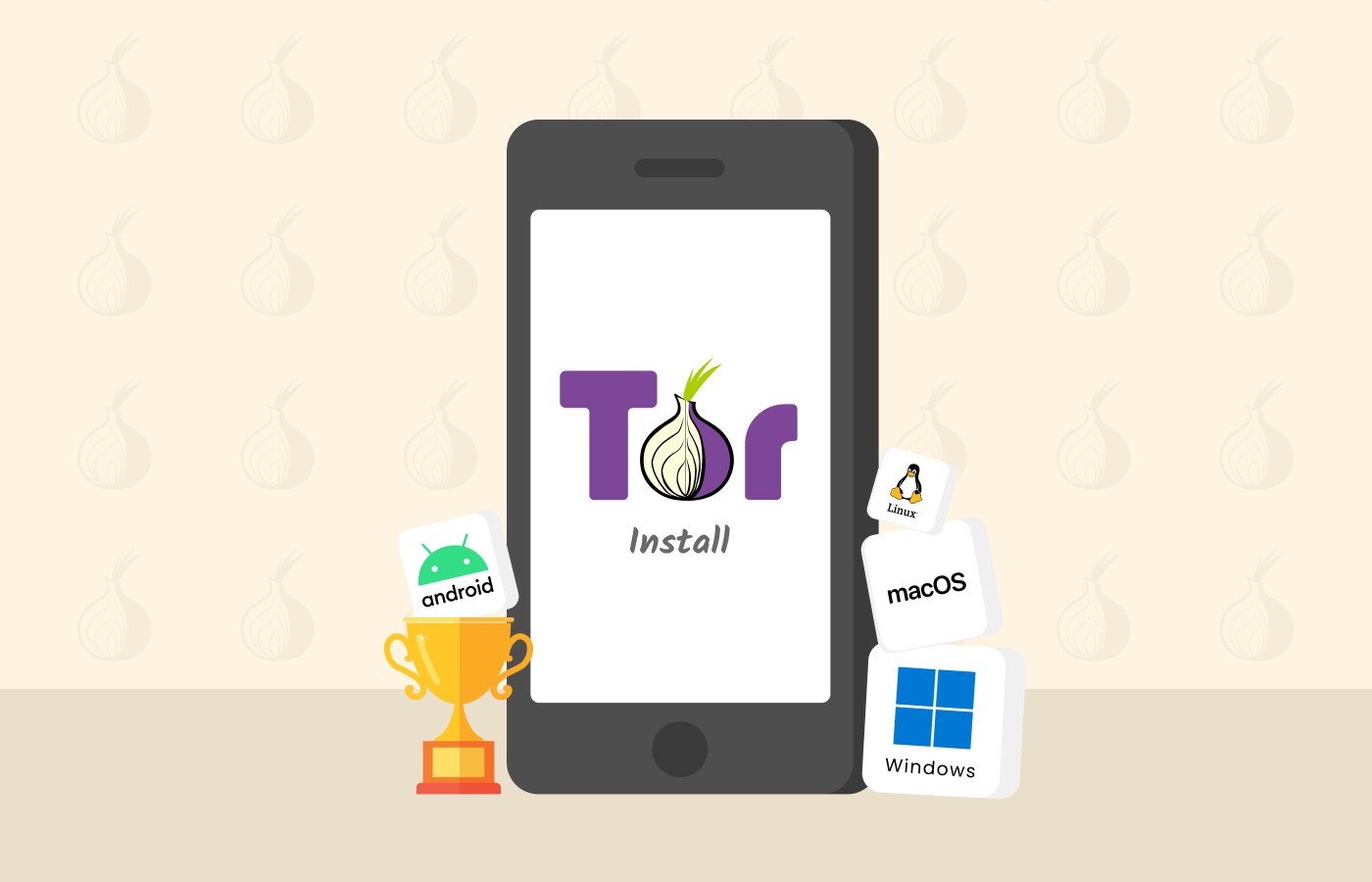There is no doubt that the virtual world of the internet is a remarkable space to explore, whether for random surfing, socializing, or gaining insightful information. But it also threatens online users’ safety, making it explicitly challenging for parents to keep their kids safe online.
So, as a responsible parent, you may consistently wonder, “How do I protect my child on the Internet?” and “How do I keep my child safe online?”
In this article, we will answer all these questions and explore the effective ways to look after your children.
Helpful tips to keep your kids safe online – Quick list
You can follow the steps below to ensure your child’s online security:
Tips to keep kids safe online – Detailed analysis
1. Talk to the child
The easiest and most effective way to keep your child safe online is to talk to them. Explain how and why they are using the internet, as well as the potential dangers and how to handle them.
Tech-savvy younger people adopt new technology quickly, accessing apps and websites unfamiliar to older people. A recent study shows that many parents, including millennials, feel their kids are more technologically knowledgeable than they are.
While you might not understand or follow the latest internet trends, games, and apps, checking what your child is doing online is important. So, inquire about their online activities regularly to know what happens in their digital life. It is also a good way for your child to open up about what they do online.
The discussion will depend on your child’s age. If they are young, impose screen time rules and tell them why it is important. Talk with your child about their favorite online activity and help them navigate their interests and preferences.
As the child grows older and starts to spend unsupervised time online, you should discuss with them what they can and cannot do and explain the reasons why. Teach them about the risks of sharing personal information, online scams, cyberbullying, and other potential dangers.
2. Limit screen time
Another important discussion with your child is the effects of digital media use on their well-being and health. The American Academy of Pediatrics (APP) recommends no more than 1 hour (60 minutes) for children under 5 years old and no more than 2 hours per day for children 5 years and older. Unfortunately, these guidelines are rarely followed, with the COVID-19 pandemic worsening the situation, resulting in a 17% increase in screen time for tweens and teens.
While the decisions around digital media may vary, like the appropriate age for a child to have a phone, it is important to set screen time limits. This will help you manage how much content your kid consumes on the internet and develop a healthy relationship with technology. Use the parental controls below to set screen limits on your child’s device.
| Age | Screen time limits |
| 0-2 | 0 |
| 2-5 | 1 |
| 6-12 | 2 |
| 13-18 | 2 |
Nonetheless, always have open conversations with your kids about their social media use. For example, tell them about the risks of using social media too much. Also, make them understand that it is okay to delete their Instagram account and stop using TikTok.
3. Use parental controls
Parental controls are essential cyber safety tools that help create a safer online environment, support healthy digital habits, and give you peace of mind. You can set parental controls directly on your child’s device or at the browser or router level.
Here are ways to use parental controls for your children’s online safety.
- Configure password-protected parental controls: You can access parental controls on iPhone and iPad through the Screen Time settings. Parental controls on Android are slightly more complex but provide greater flexibility.
- Install a parental monitoring app: Many reliable parental monitoring apps, like Bark and Qustodio, can help you block inappropriate content and monitor your child’s social media activities.
- Encourage your child to use safe browsers: Install safe browsers like KidRex or Pikluk and urge your child to use them. These browsers will carefully filter search results to omit violent or graphic content.
- Block sites at the router level: Install necessary firewalls to block malicious sites at the router level to ensure network-wide security for all connected devices.
4. Monitor their activities
Monitoring what your kid is doing on the internet is another easy way to keep your child safe online. For example, keep the family computer in a communal area to see the websites they visit. Moreover, regularly review the browser history to monitor their online activities and check if they have deleted any history.
Once children become independent with their phones, you can install a parental control app to monitor their online activities. Some apps will notify you if the child tries to access a malicious site or uses suspicious phrases in text messages or on social media, like ‘sneaking out.’
It is also important to know the common social engineering methods cybercriminals use so you can easily detect the threats and warn your children about them. For example, kids can be vulnerable to doing.
5. Asses the apps and websites they use
Read online reviews of digital content on sites like Common Sense Media to determine the suitability of the apps and websites your child can access online. Also, most App stores have a ‘Family’ category to protect young users from unsuitable content. However, this is not foolproof, so you should review the content yourself.
6. Know their passwords
Know all of your kid’s accounts’ passwords when they are younger. If they are old enough to start using social media, a safety boundary is that they must share their passwords with you.
In this regard, inform your children about online privacy threats, like password hacking. So, do the following to keep their accounts safe.
- Help them create unique and strong passwords.
- Implement two-factor authentication.
- Teach them how to use password managers.
Protecting teenagers online is more complex. As they grow older, children naturally need privacy, so knowing their passwords and monitoring their online activities becomes inappropriate. The best course of action is open communication and trust.
7. Be their friend
To keep your child safer on social media sites like TikTok or Instagram, create an account and ‘friend’ them. This might be embarrassing enough for them to keep off social media for a few more years. Otherwise, it might be a good way to monitor your children on sites where malicious strangers could reach them or expose them to cyber threats.
8. Review their privacy settings
As your child grows, a significant part of their social interactions will begin to happen in digital environments. So, it is essential to help them practice secure digital hygiene. Evaluate the privacy settings on all their social media accounts. For example, ensure their TikTok, Facebook, and Instagram accounts are private.
You can lead this process with younger kids, but talking is more appropriate with teens. Discuss with them the dangers of posting themselves and exposing their address, location, or any other personal data.
9. Be a good role model
The above are important child safety tips, but the behaviors you portray to them will likely have more impact. If you want them to be conscientious about what they share online or practice good netiquette, walk the talk and observe a hygienic digital life.
10. Let them have fun
With all said and done, the internet can benefit your kids in many ways. For example, they can access educational resources, develop skills, communicate, be creative, explore hobbies and interests, and access safe and appropriate entertainment options. However, you should encourage them to balance online activities with physical exercise and offline recreation to achieve a holistic lifestyle.
What is digital privacy?
Digital privacy is an amalgamation of three subcategories: information privacy, communication privacy, and individual privacy. We are told that our data are exposed and that our privacy is at risk at all times.
We disclose our data through digital media, such as social media sites. This has brought the term “digital privacy” to the forefront significantly after recent cyber-attacks have compromised numerous accounts, leading many to worry about the risk of being a victim of identity theft.
That is why it has now become more important than ever to ensure digital privacy for teens. Just as each year in February, “safety Internet Day” is celebrated to raise awareness regarding the importance of digital safety.
January 28th is marked as “Data protection day” to raise awareness and educate individuals on the significance of safeguarding personal information in an age where identity theft is a growing concern.
Privacy means that not only would other people not have unauthorized access to your information, but you can also regulate what data is transparent and what is confidential. Since your user data gets stored in a way that is connected to your personal information, if the hacker has access to it, you are at risk.
Despite constant effort to educate the public on the importance of digital privacy, a survey conducted in 2015 by Microsoft revealed that it is still unknown to many users by what ways they are giving away their data willingly leaving behind a digital trail.
Information privacy
Information privacy is the relation between the collection and usage of data. Under the context of digital privacy, the privacy of information means that users have the liberty to decide how their digital data, especially related to personal data, is collected and used. The privacy principle is to use personal information while protecting it from landing in the wrong hands.
Communication privacy
Communication privacy is of the policy that individuals should rest with the right to communicate digitally with the confidence that their correspondence is conferential. However, it is worth noting that all forms of digital communication have a third party present at all times, known as five eyes, nine eyes & 14 eyes.
Individual privacy
Individual privacy refers to the freedom of exploration a user has on the Internet; this enables the individual to navigate cyberspace freely, meaning you are in control of what you are exposed to and what is shown to you.
Your privacy comes at risk when you receive unwanted pop-up ads, unknown computer viruses, & spam emails.
What do you mean by web security?
The principle of defending a website or web application by identifying, avoiding, and reacting to a cyber threat is mainly a function of internet safety, otherwise known as cyber-security. A threat to your protection does not end at the hands of your negligence.

Unfortunately, often times websites and web applications are also prone to cyber threats, which challenge their integrity in ensuring your personal information does not get leaked to the Internet. This means your kid’s web security is at risk.
For this purpose, exactly we have web security – being a branch of information security. It is a system composed of protective measures and protocols capable of preventing unlicensed personnel hacking or entering websites or web applications.
There are enumerated factors that play a role in web security and protection, which have to be met at all times. The Open Platform Application Protection Initiative (OWASP) promotes and outlines these requirements.
The majority of top cyber-security web developers will comply with OWASP standards and keep an eye on the Web Hacking Incident Database. All to track hackers and gain information on how hacking of different services on the Internet takes place. These steps allow them to be able to tackle any issues they face themselves.
Website security has a significant role to play in keeping you safe from websites that pose a threat to:
Personal data
Data fraud is an increasing occurrence of data theft, such as email addresses and payment records, which also entails cyber-attackers seeking visitor or consumer details stored on a website.
Phishing schemes
Phishing is an extorting attempt. By disguising oneself as a trusted entity in electronic communications phishers often present in your teen’s inbox to get information or sensitive information, such as user names, passwords, and credit card details.
SEO spams
Search engine spam is an effort to control search engine results by manipulating traffic drawn to a scheme intended to try fraud.
Session hijacking
The hijacking of a session is an attack in which an attacker takes over a user session, which often forces them to take unwanted actions on a site.
What online threats do you need to look out for?
They say knowing your enemy is half the battle.
If the Internet were an Iceberg of exciting opportunities, what it has to offer would be just the tip; all the lies beneath the water is what we need to be aware of. Awareness creates fewer future opportunities of falling victim to what lies on the dark side of the Web.
Threats on the Internet exist, such as water flowing out from a fire hose. But rest at ease; we are here to educate you on the types of dangers that can potentially threaten your teen’s online safety.
Threats to information security
Information refers to procedures and methodologies developed and applied to safeguard all forms of sensitive data from unauthorized personnel by encrypting them.
It is a branch of information risk management whose function is to reduce or prevent the attack on extracting the user’s personal information.
If you’re wondering what classifies as personal information, it can be anything from your bank details to your password, which may pose a concern if leaked. Some noticeable threats to your information security include;
Malware
Malware is software that has been crafted purposely to inflict harm to any device on which it gets downloaded. A wide variety of malware are known; the ones you might have heard about would be Spyware, Trojan, Adware, and computer viruses.
Many sources can make you fall prey to a malware infection. As the name malware suggests, it is malicious software. Its purpose is to make money off you illicitly by stealing, deleting, and encoding your data. Although malware poses no risk to your computer’s hardware, it can overtake core computer functions and track your computer activity.
Phishing
Phishing is a malicious effort to acquire information or confidential data, such as usernames, passwords, and credit card details. It involves pretending to be a reliable source of trust to get the user to provide his information.
Phishers are found in your email inbox, or more advanced ones often design websites that are almost identical to their legitimate counterparts, fooling the user into giving their information willingly.
Pharming
Pharming is an attempt aimed at redirecting the traffic of a website to another fraudulent website. Without your knowledge, cybercriminals install malicious code on to your computer or server. Against your knowledge or permission, the code automatically guides you to fake websites.
The aim of pharming is the same as that of phishing to retrieve your sensitive information such as username, password & card details.
Internet scams
You probably have heard about fraud on e-commerce portals such as Amazon and eBay. Or maybe PayPal scams? Teen’s and children are more susceptible to falling victim to cybercriminals’ hands as they are easy targets. Most households have a single PC/Laptop, and your child’s mistake can also lead to your details getting compromised.
Internet scams often include pop-ups, which may seem harmless but are designed to install malware on your device. Your teens are more likely to become a target while trying to download a pirated version of their favorite songs, games, or movies via torrents; this in itself is an illegal act and goes against the copyright law in most countries.
Threats to personal safety
New experiences such as online communication can be shared and made thanks to the advent of the Internet. But there are cons with each pro.
Threats on the Internet are not limited to gaining access to sensitive information for monetary gain. This poses the most significant danger for teens and kids when scrolling around the World Wide Web.
Cyberstalking
Cyberstalking is the act of stalking an individual through electronic means. This often results as a cause of oversharing online. WHOA receives 50-75 cases per week reporting of cyberstalking.
Most teens love consistently updating their peers about their lives; this leads to oversharing of information, leading to your child becoming a stalker victim.
Being stalked is a scary experience that no parent would want their child to go through. At the hands of their stalker, your child may experience being harassed, and this may be partly due to the stalker becoming obsessed with knowing your teen’s whereabouts or feeling a connection with the family life they share.
For a reason, one has to be vigilant about what they share; what may seem harmless may make your teen a target of stalking.
Cyberbullying
The use of technology to stalk, intimidate, insult, or abuse anyone is known as cyber-bullying. Research by Cyber-bullying Research Center found that more than 80% of teens use cell phones regularly, making it the most popular mode of communication and cyber-bullying. Moreover, approximately 10-20% of teens report being cyberbullied regularly.
Cyber-bullying’s most common platforms are online gaming communities, various social media platforms & messaging apps. The biggest concern with cyber-bullying that a parent may have will be that there is no physical evidence of it; you won’t know unless you speak to your child about it. For this reason, it is essential to always have open communication with your kids regarding such matters.
Sextortion / Sexting
Sextortion includes using online shared material to extort a victim; it refers to the specific category of sexual harassment that implies coercive abuse to take advantage of the vulnerable person. Hence, educating your teens about the dangers of sharing intimate photography on the Internet is crucial.
You will need to educate your child that everything on the Internet is permanent, and once you share something, there is no guarantee that it will be shared amongst others.
It is always better to remain cautious than be blackmailed into performing acts that you do not want your child to perform because of such mistakes. In 2017 alone, an alarming 1304 cases of sextortion have been reported to the NCA.
Online predators
Online predation involves an underage child being coerced into engaging in unwanted sexual activities on the Internet. Children who meet and interact online with strangers are prime targets for predators on the Internet.
Perhaps that is the terrifying possibility; what makes it worse is that the kids sometimes agree to meet their alleged offender in real life.
Research reveals that every 1 in 4 girls and 1 in 6 boys will fall victim to sexual abuse before adulthood. As a parent, you are obligated to track your child’s online activities and keep track of friends they make on the Internet.
Obscene/offensive content
50% of 11- to 13-year-olds have reported being accidentally exposed to specific forms of pornography. Various websites contain content that some find offensive, disturbing, or explicit, perhaps not to the user’s taste.
Specific pop-up ads are now of this kind too. When your child watches this sort of content, their brains respond to pornography in the same manner as an alcoholic would react to seeing a liquor ad.


